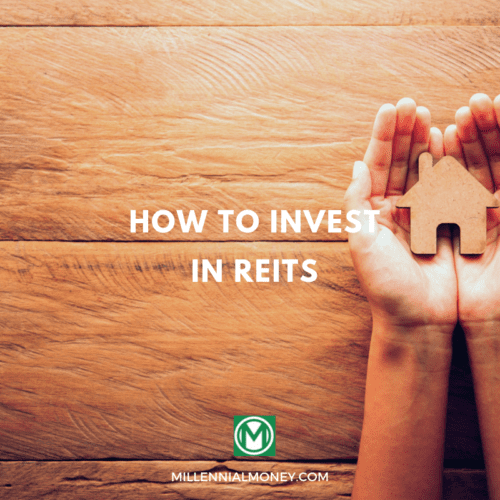Pretty crazy, right? You’re not alone if this concept sounds bonkers. Take my word for it: Masterworks is legit. As an art investor myself, I’m really interested to see where Masterworks is heading.
In this post, I’m going to provide an overview of how Masterworks operates, including how their art investing opportunities work, how much money you’ll need to buy in, and what the potential risks and rewards look like. I’ll also cover their customer service and the pros and cons of investing with them.
About Masterworks
Masterworks leverages its capital to purchase blue-chip artwork—think van Gogh, Warhol, and Picasso.
The company files the painting with the SEC and then offers fractional shares of these high-value artworks to its customers, essentially making them crowdfunded investment opportunities. It’s worth noting that they’re the first company to offer this kind of service.
Once everyone is fully bought in to a piece of art, Masterworks tries to resell these works for a profit. Gains are then passed back to the shareholders.
When you consider that some of these artworks go for $20 million to $30 million, it actually makes sense that they’ve carved a new investment niche in the fine art industry.
Would-be art investors get to own slivers of pieces they otherwise could never dream of “owning,” and if they make the right moves, they can turn a healthy profit.
The Backstory
Masterworks was founded in 2017 by Scott Lynn, who is an internationally-recognized art collector. The company currently employs 25 people and is headquartered in Soho NYC.
| Masterworks At A Glance | |
| Minimum Investment | $1,000 |
| Investment Term | 5 – 10 Years |
| Fees | 1.5% annually + 20% at sale |
How Masterworks Works
Now that you have a better idea of the general Masterworks concept, let’s take a look at how this art investing platform actually works.
1. Masterworks Sources Blue-Chip Art
The first step in the procurement process takes place when their team locates high-value art from a database of over 1 million auction records. Whether the piece is a part of a private collection in Venice or in an open auction from Sotheby’s, the talented Masterworks team is likely to find it. Once they do, they commit the capital to purchase it.
As for how the team identifies art? They use big data to conduct risk analysis and make a determination about which pieces of art are likely to appreciate over time. Masterworks’ proprietary Price Database lets users view the returns of thousands of paintings and artworks.
2. SEC Registration
Next, Masterworks files the new art investing opportunity with the Security and Exchange Commission (SEC), which is required for offering investment deals to the public.
3. Shares Offered Investors
After the SEC approves the deal, Masterworks then offers shares to investors on its marketplace. If you’re lucky enough to qualify as a Masterworks investor, now’s your chance to buy into that Banksy you’ve always dreamed about.
4. Masterworks Makes the Sale
After buying a piece of art, the company tries to hold onto the item for three to five years to allow for appreciation. At any time, however, an interested buyer can make an offer on any piece. If the deal is right for all parties involved, including the investors, Masterworks sells the piece. It then passes along the profits onto each investor.
Masterworks has also launched a trading platform. You can sell your shares to other investors through the Masterworks bulletin board feature. This is great for those members that want liquidity before the sale of a piece of art.
5. Members-Only Gallery
As an investor, you’ll have access to Masterworks’ exclusive art gallery located in New York City’s SoHo neighborhood. If you’re an art lover, this seems like a really cool way to be able to enjoy masterpieces that are out of reach of the general public.
Pricing and Fees
You’ll need to pony up at least $1,000 to open a Masterworks investor account. Once you’re in, though, some painting’s shares can go for as little as $20. These share prices will fluctuate along with the value of the painting—just like any other investment.
Masterworks charges a 1.5% assets under management fee and the company also takes 20% of the profit a sold painting if it has gone up in value. This is similar to how hedge funds work.
Signing Up and Getting Started
Masterworks is an invite-only platform available to both U.S.-based and international investors. Request your invitation by clicking on the blue button at the top right-hand corner of your browser.
Next, enter your first name, last name, email address, phone number, and account password. You’ll also tell them how you heard about Masterworks.
Once that’s done, you’ll be asked how much money you are interested in investing over the next 12 months. No doubt, this is their way of identifying high-profile investor opportunities.
Interestingly, if you enter $100,000 in the box, the company claims you can earn over $250,000 over seven years. This seems really high to me, particularly in the unpredictable world of high-end art. Like anything else, you’ll want to read the fine print and do your homework to make sure those kinds of returns are even possible.
It looks like I’ve caught their attention by entering $100,000! They’re offering me an interview slot. It appears that the interview must happen in order for my account to get approved.
I actually think this is kind of cool because it’s an opportunity for both you and the company to learn more about each other, see whether it’s a fit, and if so, build what hopefully blossoms into a mutually beneficial relationship.
After picking your interview time, all that’s left to do is chat with their team and answer any questions that they might have. Good luck! This phone call unlocks your ability to have a lifelong art sales rep whenever you need customer support.
Security
Overall, the Masterworks platform feels pretty secure. The company uses leading-edge encryption technology to protect you as you use the site.
In their privacy policy, they also talk about how Masterworks Administrative Services, a special division of their organization, is committed to safeguarding your data.
When it comes to securing their art collection, Masterworks seems to have that covered as well. All of the artworks that aren’t on display in their private gallery are located at Delaware Freeport, which seems to be the most secure place in New York City to store high-value art.
Customer Support
To contact Masterworks, you can give them a call at 203-518-5172 or send them an email at [email protected]. Their office hours are 9 a.m. to 6 p.m. Eastern Time.
If you’re approved as an investor, you’ll be matched with an advisor who will be able to help you with any questions you may have.
Pros and Cons
Pros
- Unique investing opportunity for art lovers
- Attractive historical rates of return so far
- They are the pioneer in the art investing space
Cons
- Lower liquidity—Masterworks just recently opened their trading platform where you can sell your shares to other investors through a bulletin board, but there would need to be a buyer. However, they continue to add more paintings to this platform.
- Performance is dependent on the company’s ability to sell paintings and the market
- Some might consider crowdfunded art investing to be risky due to it being so new
Alternatives to Masterworks
There aren’t many alternatives to Masterworks right now. But I imagine that will change down the road—particularly if Masterworks ends up hitting a home run with their innovative business idea.
As of now, Amazon Art and Artspace appear to be somewhat in the same wheelhouse, but they’re also a little different as well.
Is Masterworks Right for You?
Personally, I think Masterworks is a really cool and interesting platform. I also happen to have the extra capital to risk in this type of investment.
To be honest, if you are just starting out with your first $1,000 to invest, I would not recommend you throw that into crowdfunded art. Instead, check out my post How to Start Investing.
On the other hand, let’s say you’re a high net-worth individual. Or, you already have a well-diversified investment portfolio that consists of traditional equities, bonds, and real estate. If you meet either of these profiles, then testing the waters with Masterworks seems like a pretty good idea.
Whichever course you decide to take, make sure to do your research and only invest in things that you understand and are comfortable with. Remember, there is no such thing as a surefire investment that will guarantee returns.
Here’s to making informed investment decisions and enjoying the process that leads to financial independence!






No comments yet. Add your own